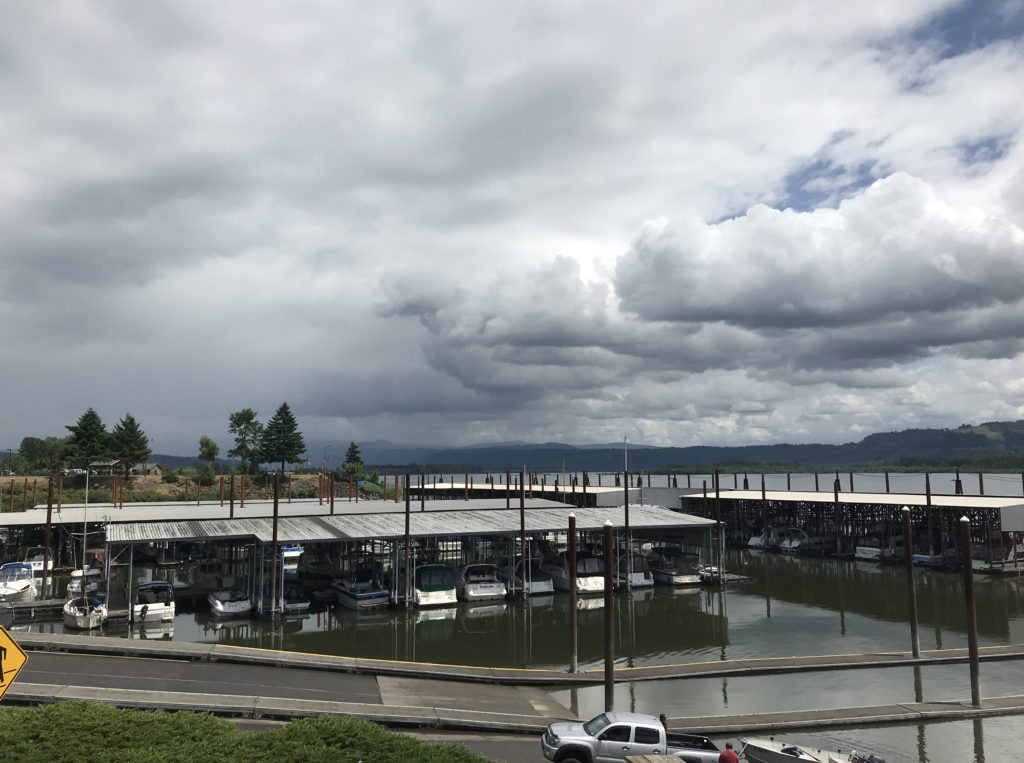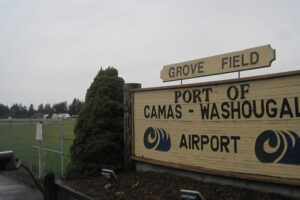Port of Camas-Washougal commissioners voted to approve a 4 percent rate increase for the Port’s marina at their June 17 meeting.
Port staff members said they believe the increase, which will go into effect in 2020, is justified based on the rising demand for the marina.
The Port’s chief executive officer, David Ripp, recently told the Post-Record that the 327-slip marina is currently at 100 percent occupancy, with a waiting list of almost 100 people.
According to statistics provided by Port, the marina was 94.25 percent full in 2018. The occupancy rates have increased every year since 2012, when the marina was 82.49 percent full.
“The economy is good,” Ripp said. “People are buying boats. People want to recreate. We’re growing in population, and we’re basically the only public marina in this area.”
Mark Hamrick, the Port’s harbor master, said the marina’s location — on the Columbia River, 5 miles east of Portland, close to the entrance to the Washougal Waterfront Park and Trail — gives it an advantage over its competitors.
“Cascade Locks has a marina, and then everything else is going to be downstream towards Portland,” he said. “But basically, when people get in a boat down there, where are they going? They want to go up through the Gorge. They want to find a little island or a beach or anything out of the way. If they can actually get in here, that’s 15 miles that they’ve saved themselves one way.
“We are the last marina before you get up to the Bonneville Dam. We are the gateway to the Columbia River Gorge,” Hamrick continued. “People seriously come from all over the world to see what we have here. Mile marker 25, which is six miles, seven miles away, is the most photographed place in the Northwest.”
Last year Port staff members and commissioners elected to forgo a rate hike, electing to raise the lease minimum from six months to nine months. But the marina’s rates have increased incrementally since 2000, according to statistics provided by the Port.
Twenty years ago, the in-district rate for a 25-foot uncovered slip was $66.50. Last year the rate for the same slip was $112.75.
“From what I’ve heard from the boaters, the 4 percent is appropriate for what they’re getting,” commissioner Larry Keister said. “It covers our expenses. If we go higher, we risk losing tenants. Although we’re at 100 percent, I think 4 percent right now is realistic. I do believe as the development goes into the waterfront property, the marina is going to change.”
At the commissioners’ June 3 meeting, the Port’s director of operations, Kim Noah, said the marina benefits from its 263 covered slips, which protect smaller boats from inclement weather.
“You can see the Columbia River up this way, we’re the only ones that have covered slips,” Noah said. “You need to go down into Portland in order to get other covered slips. That’s one of our big sells here.”
The marina’s current rate of $112.75 for a 25-foot uncovered slip ($122.75 for out-of-district boaters) compares favorably to the rates charged at Vancouver’s Steamboat Landing ($165 for a 24-foot slip), Portland’s Columbia Crossings ($201.80-$217 for a 28-foot slip), Portland’s River Place Marina ($350), the Port of Kalama ($106 for a 24-foot slip) and Port of Hood River ($128.16-$140.44).
For a 30-foot covered slip, the Port charges $214.75 to $222.75 ($224.75 to $232.75 for out-of-district boaters) per month. Columbia Crossings charges $219.74 to $289.60 per month for a slip 25 to 32 feet long. The Port of Kalama charges $155 per month for a 30-foot slip.
Noah said that the vast majority of the Port’s marina users live in Clark County and don’t take their boats to Oregon very often.
“Although Portland is a close market to us, when you look at the tenant base, both at their marinas and our marina, your main source is within your state,” Noah said. “You’re not seeing a lot of people going over to the other state to use their marina. Although it’s helpful in understanding what they’re charging and what that competitive amount could be, if we overprice, people aren’t going to start heading over to Portland and vice versa.”
Keister used to be an avid fisherman and owned a 35-foot Bayliner, which he kept at the Port’s marina for more than two years before selling it.
“I liked the cleanliness and the security,” he said about the Port’s marina. “It’s just a nice place to have a boat, with nice people. When I moved back here I was very impressed with the quality of the marina. That was important to me.”
In the past year, the Port has made improvements to the marina’s electrical system, fuel docks and security cameras, and added a ticket vending machine to the boat ramp.
Hamrick said that when he began working full-time at the Port in 2005, he never considered that the marina could be completely full someday.
“I never even thought that kind of stuff,” he said. “We went through a ton of change here. Slowly, we’ve come pretty far.”
Port of C-W to hike marina rates 4 percent
At full occupancy, 327-slip marina has 100 on waiting list
- By Doug Flanagan
-
June 27, 2019 5:30 am
-
News


